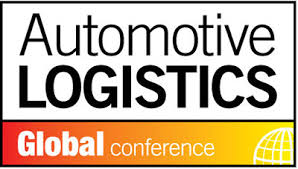This blog is sponsored by Landstar
Interested in learning more about becoming a Landstar Agent? Visit us for details.

Written By: TMSA Staff | Jun 3, 2022 12:00:00 AM

When it comes to the business mix of your company, there’s truth to the old adage: “Don’t put all your eggs in one basket.” It can be important to diversify your customer base to successfully increase revenue and growth, particularly if you’re a smaller but fast-growing enterprise in transportation and logistics. But diversifying your customer portfolio also is important because if you’re concentrated too heavily on a single industry or commodity that you transport, you risk volatility in revenue and resources as demand rises and falls.
It’s a business risk to rely heavily on a single large client or a small handful of customers for the bulk of your revenue. It’s risky because the company retains little control over its future and has little power to plan defensive business moves if something happens to its small portfolio of customers or to the industries in which those customers operate. If those customers experience a slowdown due to an economic downturn, a disaster, or bankruptcy, your business will suffer equally without having had the opportunity to take corrective actions.
Losing a client here or there doesn’t need to have a long-lasting destabilizing effect if your company has deliberately and strategically diversified your client base. However, having the right customer diversification strategy in place is essential for success.
Here are five practical tips to ensure your company’s customer diversification strategy is a success:
Carefully consider the sales and operational strengths of your company. Does your company have exceptional expertise or capabilities in specific types of commodities or transportation modes, such as temperature-controlled, dry van, flatbed, dimensional freight? Are there unique opportunities for you to serve specific targeted market verticals, such as food and beverage, retail, pharmaceuticals, or construction?
Once you’ve decided the market segments, develop your unique value proposition. What makes your company able to provide transportation and logistics value to those within this market segment? It could involve experience from individuals on your team who have worked in this space. It may be operational expertise or knowledge of handling the products or materials that comprise that marketplace. Make sure to write down your messaging so it’s clearly and consistently communicated by your entire team.
It’s important to have a person or small team whose purpose is to focus specifically on the new customer base you’ve decided to court. Make sure this individual or group has realistic expectations that answer such questions as: What’s the market segment we’re going after? What’s the financial implications of going after these new customers? Look at all factors that will impact the success of your strategy, ranging from expenses of necessary increased travel for customer visits and participation at industry events to potential technology investments and increased incentive compensation.
Once you’ve identified your targeted market segments, then identify the companies you’ll be focused on. Also do serious research to identify the individual transportation and logistics decision-makers and influencers who you’ll be targeting. Ultimately map out your sales strategy that will enable you to reach out to each of these individuals using the value proposition you’ve developed.
Once you’ve identified the market verticals you’ll be targeting, ensure that each customer feels important. Take steps to build legitimatized credibility of the deep, focused expertise from your team. Consider developing a whitepaper or website blog series that provides market intelligence or addresses particular challenges of your targeted industry or customers. And do everything necessary in sales, marketing and operations to ensure a positive customer experience among your newly targeted customers.
Follow these critical five steps and then strategically build out a sales process that will generate results and diversify your customer portfolio.
This blog is sponsored by Landstar
Interested in learning more about becoming a Landstar Agent? Visit us for details.
Tags: Strategy

TMSA's CEO Brian Everett had the opportunity to recently attend the Automotive Logistics Global Conference in mid-September in Detroit. The event was sponsored by several companies active in TMSA,...